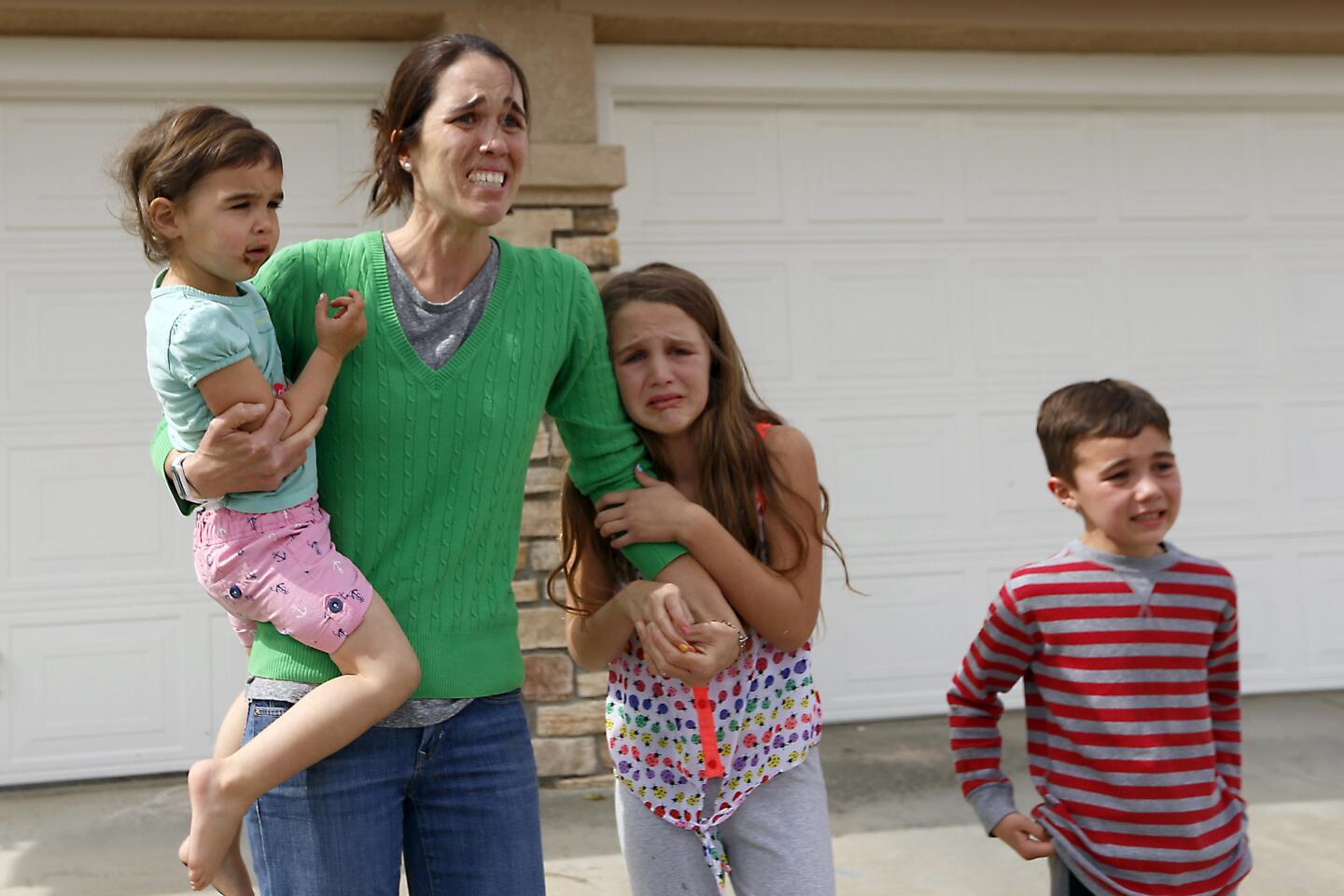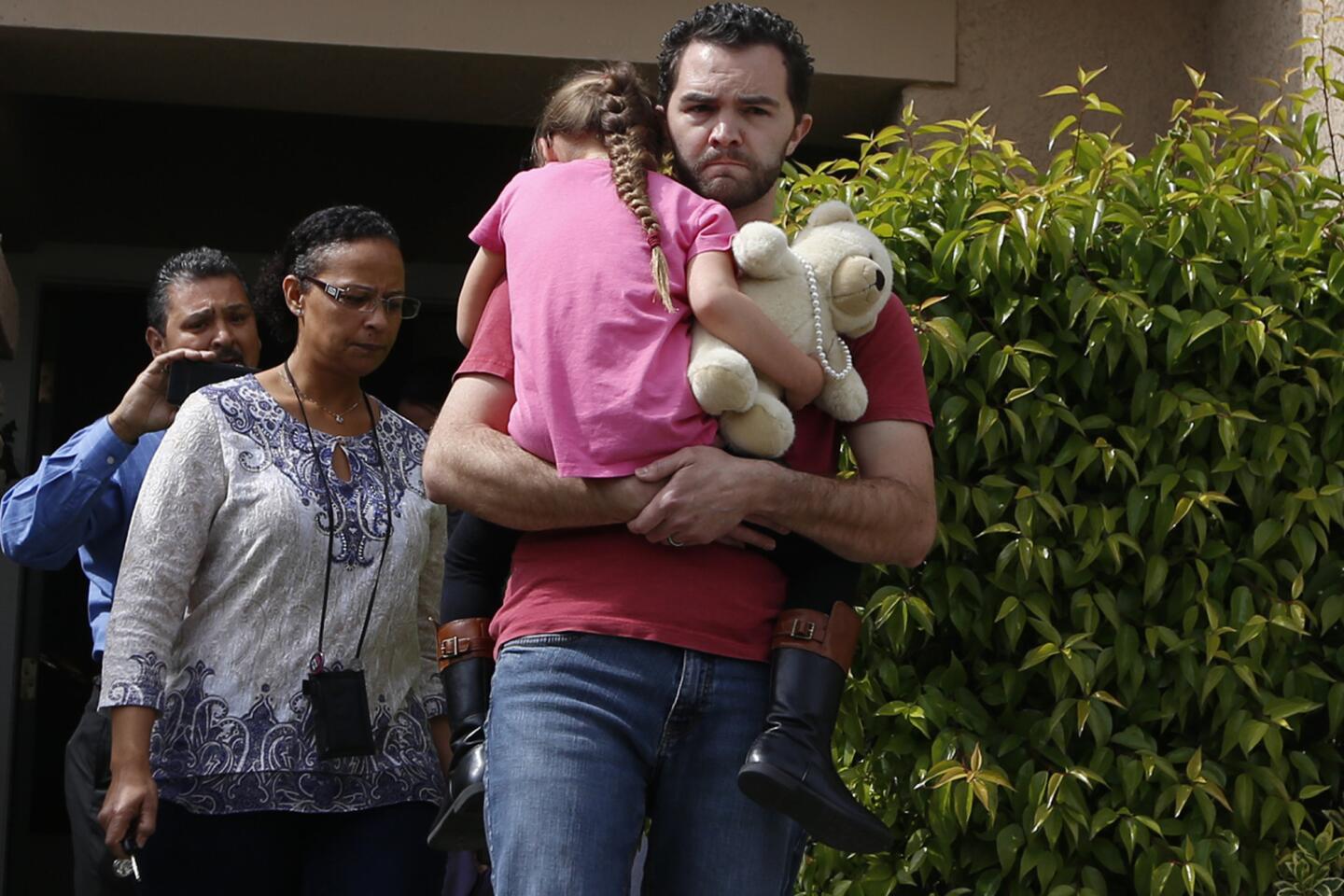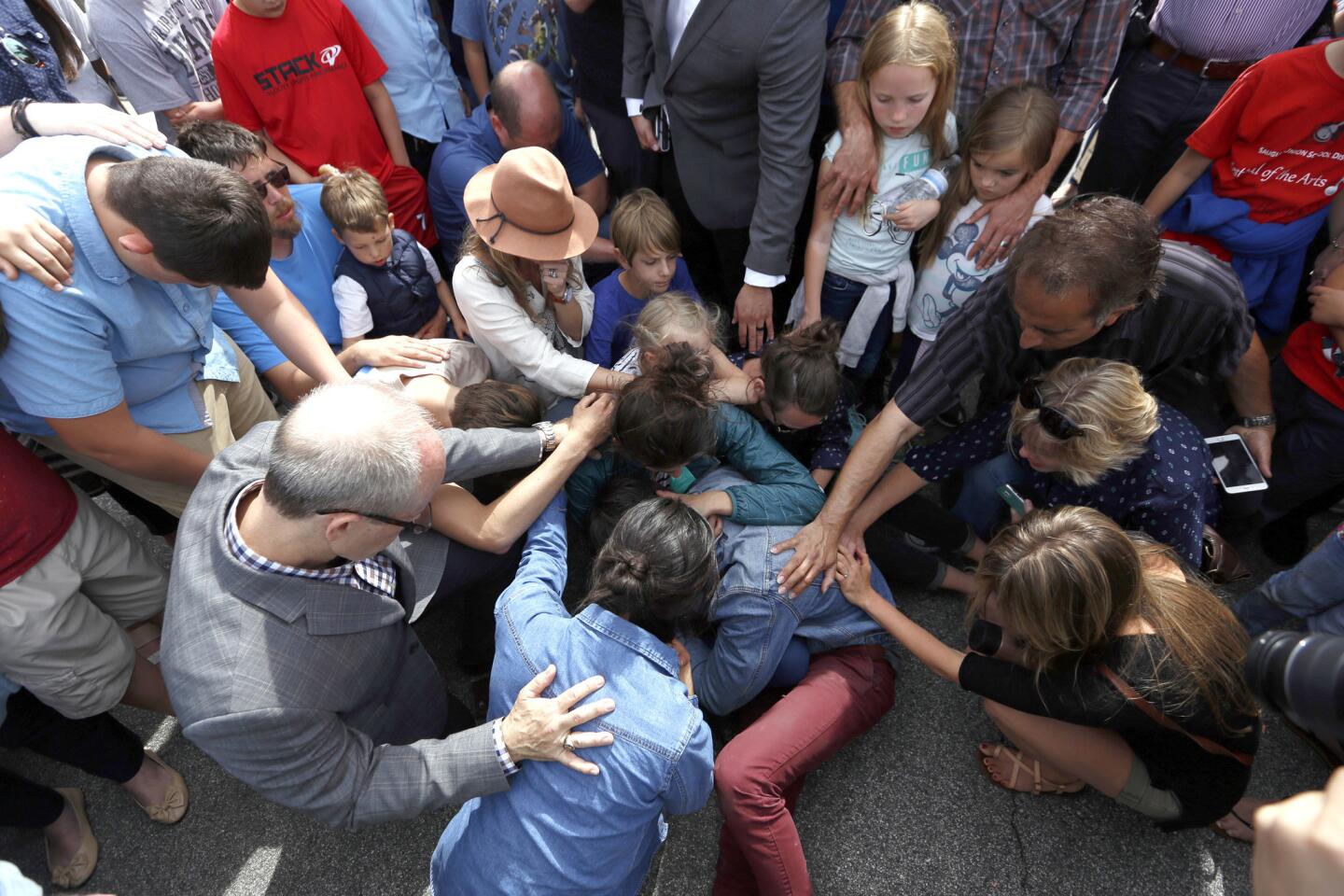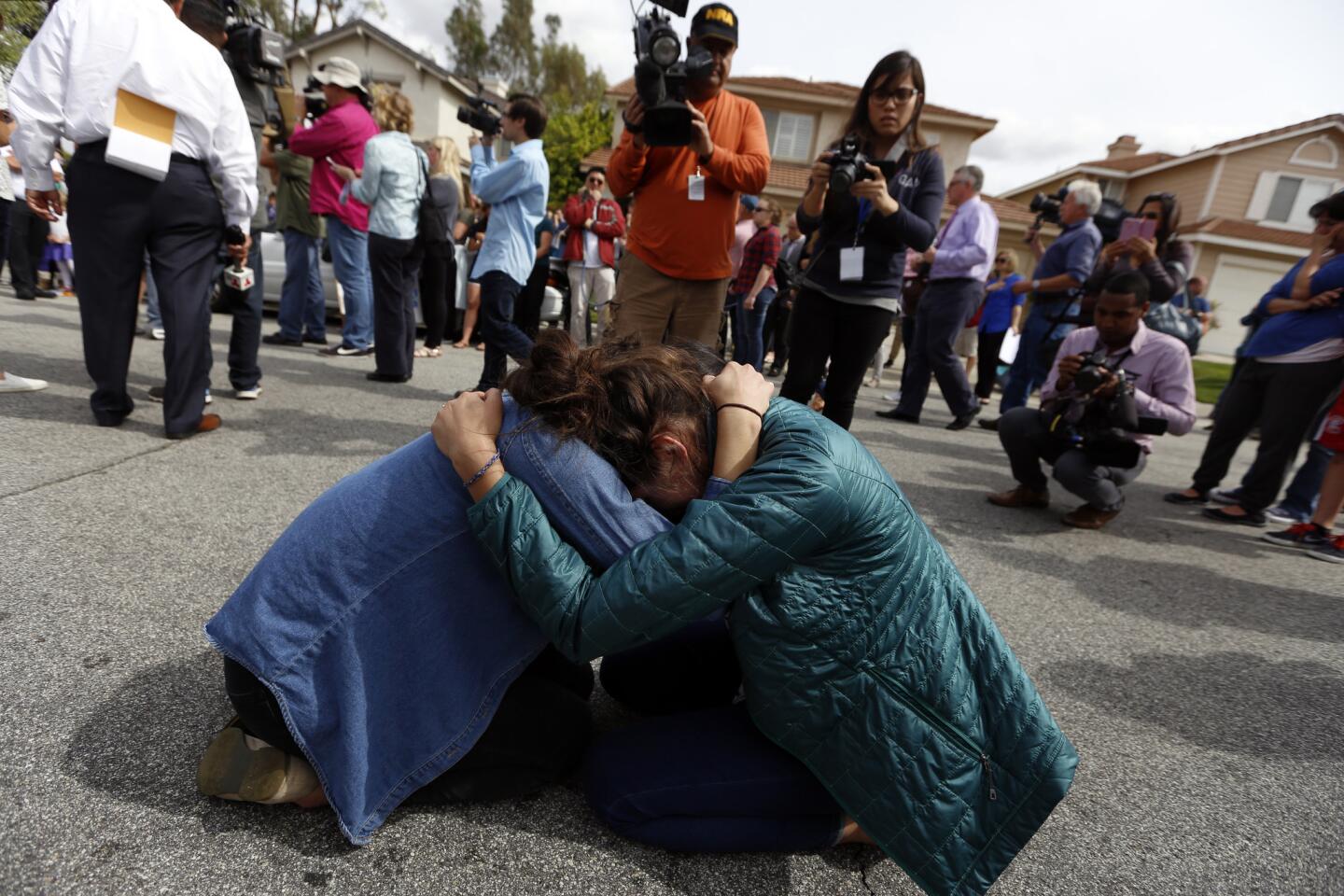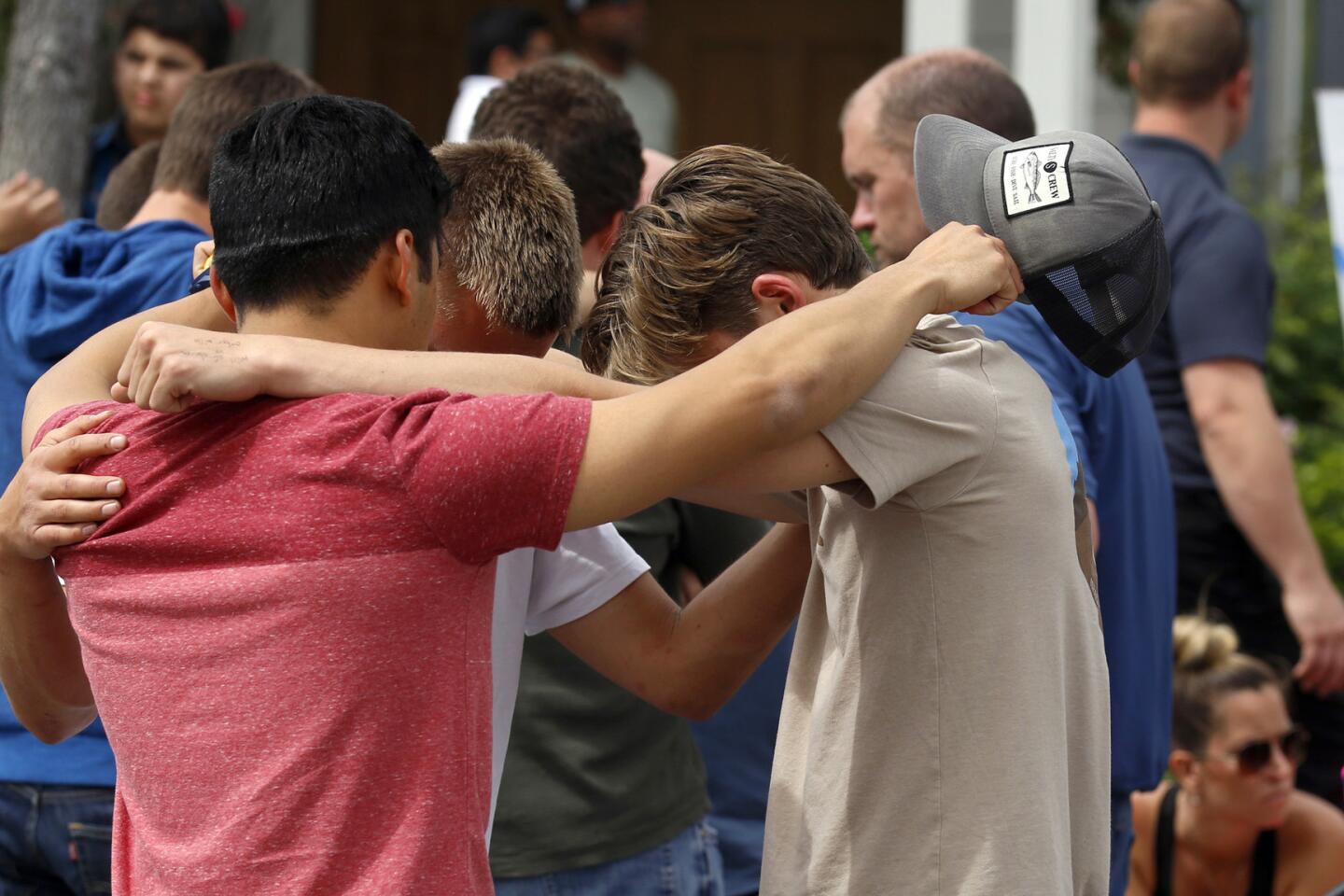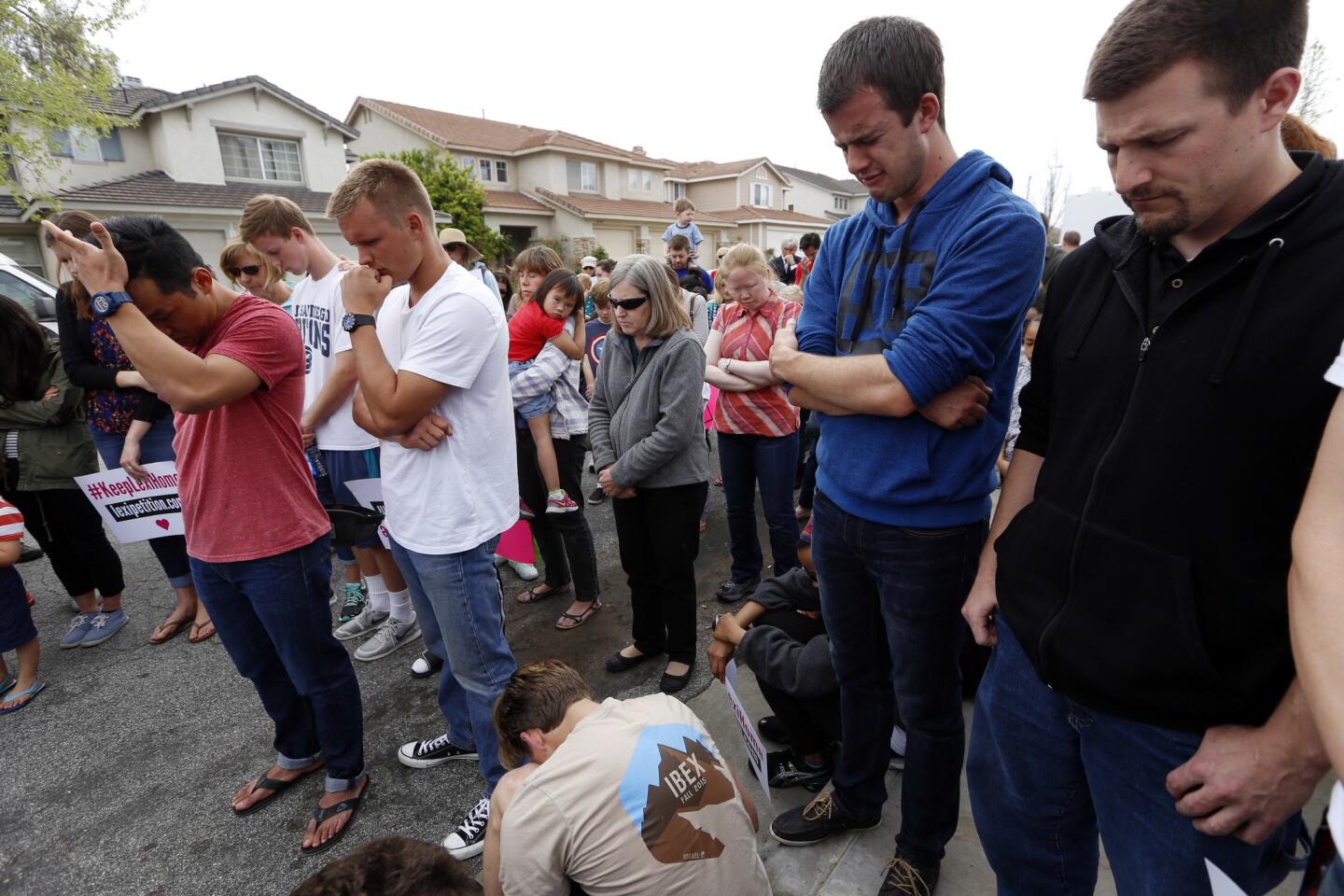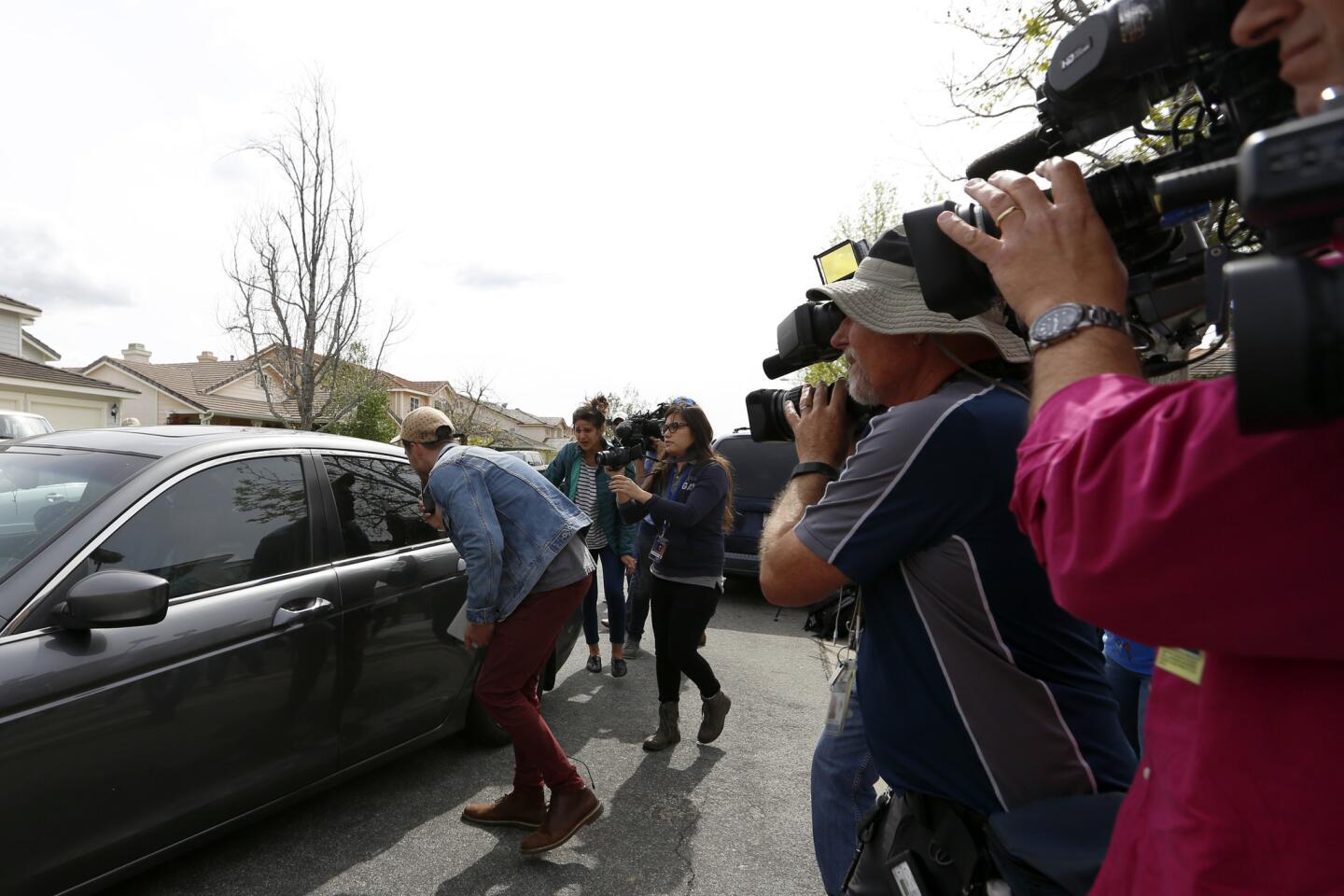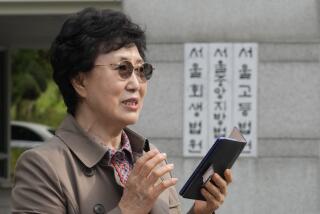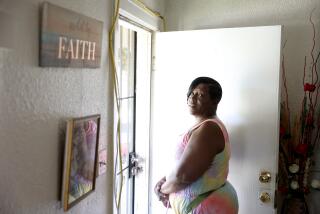‘It’s not supposed to be this way’: Why it’s getting more difficult for foster families
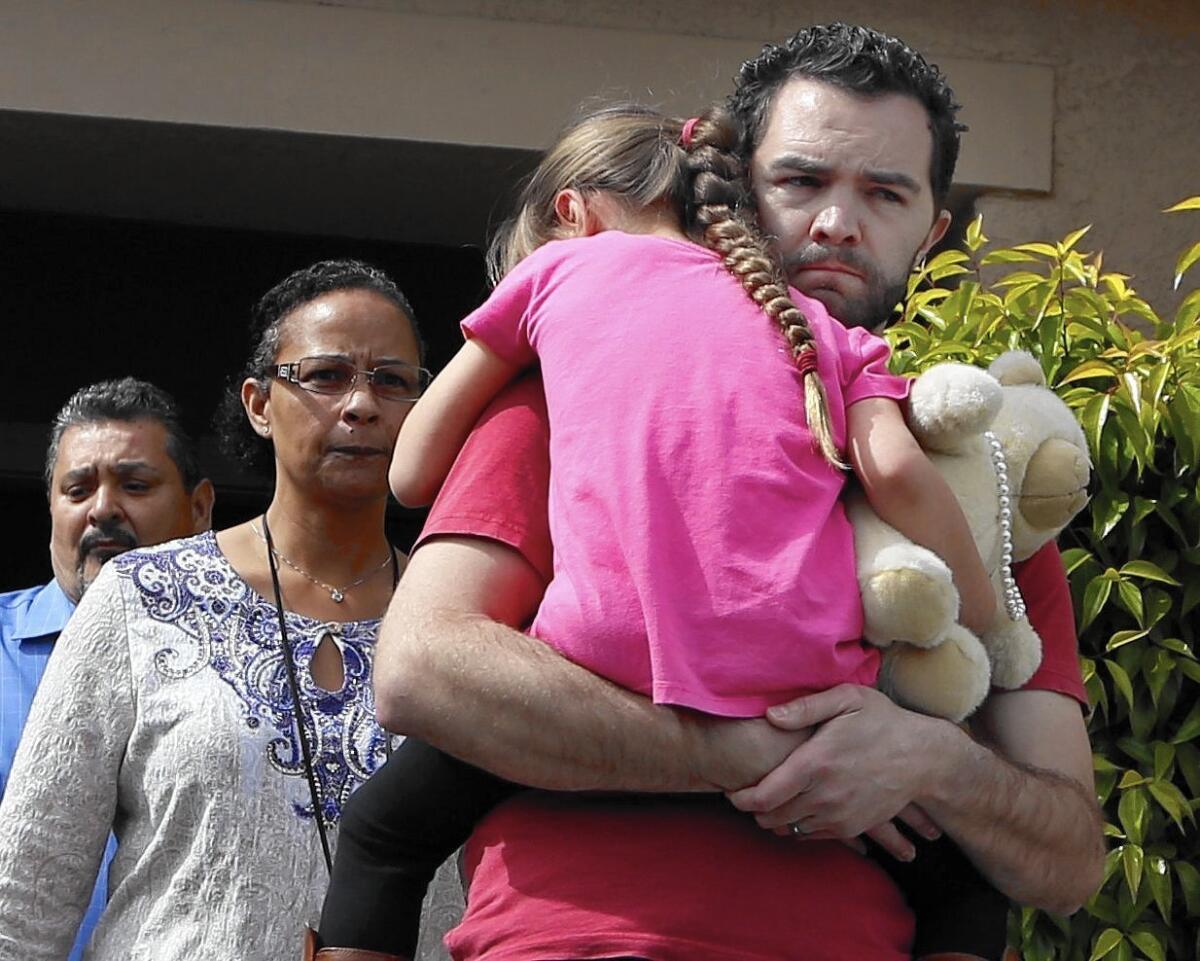
Foster care asks caregivers to perform an almost impossible task: Love the child as your own, but relinquish the youth without delay or protest when social workers say the time has come.
The anguish sometimes associated with such removals came into sharp focus last week when social workers removed a 6-year-old Santa Clarita girl who is part Choctaw, from her longtime foster parents.
Across the nation, newspapers and television broadcasts displayed images of her distressed caregivers saying goodbye on the family’s driveway as they were surrounded by hundreds of supporters who protested the government’s decision to place the girl with relatives.
The case traveled an unusual path through Los Angeles County’s child welfare system, making comparisons to other cases difficult. But the long delays and deep emotion expressed at the final removal carried an unsettling familiarity to a growing number of caregivers and children in the system.
“My heart sank when I heard about it. I know what that feels like,” said Ian Lewis, 45, who had to say goodbye this year to a baby he had nursed from the brink of death following child abuse injuries.
The baby was the fourth foster child to be removed from the Miracle Mile home Lewis shares with his wife, a pediatric nurse, and their biological daughter after, he said, social workers led him to believe that each would remain with the family permanently, partly because the children’s time with the family had been so long.
Some caregivers avoid the heartbreak by never bonding in the first place. For those who do, relinquishing custody is becoming harder as average stays in foster homes grow longer due to crushing court delays and the often belated discovery that family members exist to take the child in.
Despite landmark state and federal laws intended to reduce the time in temporary foster homes, Los Angeles County foster youth are remaining in limbo with impermanent caregivers for an increasing share of their fleeting childhood, and the social bonds with their foster parents naturally deepen as the years drag on, lawyers, social workers and others who work in the child welfare system say.
Children who entered Los Angeles County’s foster system in 2007 had a median stay of 13 months in foster care, according to county information collected by UC Berkeley. Those who entered in 2012 — the most recent group studied — had a median stay of 16 months. A quarter of the youth who entered foster care in 2012 spent 29 months or more in foster care.
A portion of the increase results from the law that went into effect in 2012 to extend foster care to age 21, but across all categories, Los Angeles County foster youth spend significantly more time in foster care than the state average.
In an attempt to shorten the time children spend in limbo, Congress approved the Adoption and Safe Families Act, and in 1997 President Clinton signed it into law. It places strict limits on the time given to parents to prove their competence. The goal was to more quickly reunify families or more swiftly find children new permanent homes with extended relatives or adoptive families.
The law shortened the time for hearings meant to decide on a permanent home from 18 to 12 months after a child’s removal from their parents, but lawyers say court delays in Los Angeles County regularly extend past that deadline.
The Times filed a public records request to determine how often Los Angeles County courts miss statutory deadlines in child welfare cases, but the presiding judge of Los Angeles County juvenile court, Michael Levanas, declined to provide the information, saying the release would improperly interfere in his personnel decisions and the assignment of judges.
He did not deny, however, that a backlog exists.
“The number of new petitions [to remove children from their parents] filed in dependency court have risen almost 25% from 21,557 in 2010 to 26,457 in 2014 while funding to the court has been drastically cut,” Levanas said. “Cases and the law have become far more complex in the last 10 years.”
Marcia Robinson Lowry, a veteran litigator who has filed class action lawsuits aimed at reforming foster care systems around the country, and who leads a nonprofit law firm called A Better Childhood, said the pressures faced by child welfare officials are no excuse for the delays experienced by children and families.
“L.A. County has big problems in its foster care system and a real lack of accountability,” she said. “There is no question that there has not been a great deal of attentiveness to the consequences for children, and I think it’s a violation of the law and constitutional principles.”
Citing the adage “justice delayed is justice denied,” Leslie Starr Heimov, who leads the court-appointed law firm for foster youth in Los Angeles County, said delays hurt everyone involved — that it wasn’t just the Santa Clarita child and foster parents who suffered as the custody battle dragged on for nearly five years.
“Nobody saw it because there weren’t television cameras, but it was even more painful for the family that was waiting,” Heimov said.
Much of the heartbreak could have been avoided, Heimov said, if members of the girl’s Utah family had been identified by social workers as possible permanent caregivers immediately after the girl was removed from her father in early 2011.
“We don’t do a very good job identifying family at the front end,” she said. “Instead, we start looking for family when it is already too late.”
Los Angeles County relies on about 80 retired social workers to perform family searches for the county’s 16,000 foster youth, and the work is tedious and time consuming because the legal system gives preference to anyone who is related to the child through blood, marriage or affinity – including close family friends and neighbors.
In the case of the Santa Clarita girl, the eventual Utah caregivers emerged around the time the girl went to live with foster parents Rusty and Summer Page in December 2011, according to court documents.
The uncle of one of the Utah caregivers is the stepgrandfather of the girl and had not been identified by Los Angeles County social workers as a potential permanent placement for her, court records said.
In 2012, the girl’s father, who has an extensive criminal background, discontinued his efforts to regain custody of the girl, and social workers then initiated work to transfer the girl to the Utah family, court records show.
From there, the case took an uncommon course because the girl’s father is an enrolled member of the Choctaw tribe and the 6-year-old is 1/64th Choctaw. This qualified her case for supervision by the tribe’s child welfare unit, which identified the Utah family as its preferred placement for the girl, partly because a sibling also lives in the home and another sibling lives down the street.
The girl’s paternal family, according to a Native American news organization’s article based on interviews with relatives, had relocated to Los Angeles after the Indian Relocation Act of 1956 in which Indian families were encouraged to integrate in mainstream culture. After the migration, Los Angeles gained the second-largest urban Indian population in the United States after New York City.
To fight the girl’s transfer to her family in Utah, the Pages enlisted the help of Washington, D.C.-based attorney Lori Alvino McGill, a former clerk for Supreme Court Justice Ruth Bader Ginsburg. In her legal practice, Alvino McGill has targeted the constitutionality of the Indian Child Welfare Act, and, in 2013, she helped win a Supreme Court decision in the “Baby Veronica” case limiting the reach of the act.
Meanwhile, the Santa Clarita girl remained with the Pages as appeals dragged on and as the California appeals court identified mistakes by the lower courts.
Philip Browning, director of the Los Angeles County Department of Children and Family Services, said he agreed with Heimov that the heartache for everyone could have been avoided if his department had the resources to search for family from the onset.
“We need to have more staff or a better way to find potential family caregivers from the very start,” Browning said
Deborah Dentler, the attorney for Lewis, the foster parent who has had four children reunited with family after he and his wife had formed bonds, said children’s fragile emotional connections will continue to be collateral damage until the family-finding unit is improved.
“The routine time that my phone rings with some desperate foster parent is many months into the placement when they felt like no relative is going to show up now because they were trained in foster parent classes that family members would be found early,” she said.
By the time the fourth child was removed from Lewis unexpectedly, the family had started to believe the pain they felt was simply part of the process, Dentler said.
“It took me to explain to them that this is outrageous,” Dentler said. “It’s not supposed to be this way.”
Twitter: @gtherolf
ALSO
Orange County woman suing Trump University is allowed to back out
Clinton criticizes lax campaign finance laws between two L.A.-area fundraisers
After Baca’s guilty plea, L.A. jail corruption case turns toward trial of his top aide, Paul Tanaka
More to Read
Sign up for Essential California
The most important California stories and recommendations in your inbox every morning.
You may occasionally receive promotional content from the Los Angeles Times.
